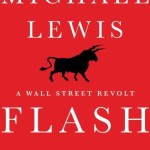The Rise of the Machines
Michael Lewis wrote Flash Boys to alert the non-finance world about the scourge of high frequency traders front-running investors and fracturing traditional capital markets.
Lewis does not distinguish between quantitative (or algorithmic) trading strategies and high frequency trading firms (HFTs), although it’s helpful to define these terms first.
Quantitative strategies – of which HFTs form a subset – are computer-driven trading models, in which the human input all occurs prior to a market’s opening bell. The human instructions come from computer programmers who tell the model to look for certain signals in the way securities trade to prompt a buy or sell order. HFTs are a type of quantitative strategy that rely on speed, in milliseconds, to successfully execute trades. A good primer generally on quant trading and HFTs from someone inside that world is Rishi Narang’s Inside The Black Box, which I reviewed recently.
Lewis points to at least four simultaneous innovations that have led to the profitable opportunity for high frequency trading firms over the past decade.
- First, an investor-protection law from 2005 called Reg NMS demanded that investors receive the ‘best’ price visible on a stock exchange, even though sophisticated investors know that large investment purchases or sales may get a best overall price if done quietly ‘off-market’ without alerting the rest of the investment community. Following Reg NMS, HFTs can play games with the ‘visible’ market price by posting, say, 100 shares for purchase or sale, only to cancel that price as soon as a real order hits the market. In Lewis’ telling, the 100 share order from the HFTs becomes an electronic trip-wire to signal certain types of large investors are making a move, and allowing the HFTs to front-run that investor through superior trading speed.
- Second, the fracturing of the equity markets into more than a dozen major electronic exchanges and 40 (or so) broker-dealer created ‘dark pools’ for anonymous electronic trading has created multiple opportunities for risk-less arbitrage between exchanges, for those HFTs who execute trades in milliseconds.
- Third, the privatization of US stock exchanges like the Nasdaq and New York Stock Exchange led the exchanges to seek their own profit through fee arrangements with HFTs at the expense of investor-oriented protections, which would have limited the access of HFTs.
- Fourth, technology – between lightning-fast software and speed-of-light fiber optic cable – created a haves and haves-not unfair playing field between investors in many markets.
Lewis’ narrative follows the evolution of his protagonist Brad Katsuyama who figures out just enough of the HFT game to become inspired to shut it down – first because it interferes with his job trading equities for the Royal Bank of Canada, and later because he’s a self-appointed evangelist for protecting real investors from the HFTs.
Katsuyama and his plucky rag-tag group of Wall Street castoffs – and here Flash Boys most closely resembles the plot of every early Bill Murray movie like Meatballs and Stripes – set out to build a better exchange known as the Investors Exchange (IEX),[1] which through slow trading will box out the HFTs and their nasty algorithms.
The moralistic tone, and why it matters
Flash Boys differs from Lewis’ earlier finance books in the introduction of his moralistic tone – he seems genuinely outraged by the activities of high frequency trading firms. This moral outrage differs from the way that he was previously mostly amused by disgusting mortgage traders, stupid Icelandic Viking financiers, or Sub-prime CDO structurers.
In Liar’s Poker, Boomerang, and The Big Short Lewis distinguished himself from other financial journalists by adopting a knowing attitude toward Wall Street’s greedy ways. Whereas other financial journos portray a fairy tale world of virtuous small-time investors and evil greedy bullies, Lewis worked on Wall Street for a few years and knew better than to fall into that trap.
Lewis usually celebrates – at least up to a certain extent – those who outwit the competition to earn themselves a big payout.
Lewis’ bad guys in those earlier tales typically would receive a kind of satirical treatment for their excessive attitudes. Lewis found ways to laugh at his antagonists because he spent time enough with them to understand their strengths, weaknesses, and the right distinguishing characteristic to turn their unattractiveness into humor.
Lewis does not seem to have spent any time getting to know high frequency traders for Flash Boys, however, and here his moral tone – rather than knowing satire -exposes a weakness.
I’m not saying Lewis shouldn’t be upset about high frequency trading. He makes a compelling case that we should all take a much harder look at whether all of their activity acts like a massive, hidden, tax on capital markets. What I am saying is that the moral tone – which resembles the style of weaker financial journalists – exposes the fact that he hasn’t spent enough time getting to know actual high frequency traders.
If he had spent time with some, we would have gotten some funny anecdotes and satirical send-ups – That Russian programmer with the bad breath and an unhealthy obsession with Miley Cyrus! Ha! The South African technologist who keeps twenty cats in his office and eats only vegetables that start with the letter T! You can’t believe how funny these guys are! That kind of thing.
The humor is amusing in its own right of course, but the humor also tells us that Lewis was there, and got to know these people. Unique among journalists he has a track record of actually going out and finding the stories rather than create fairy tales based on preconceived moral views. The Good Guys = Brad Katsuyama & Team versus Bad Guys = Faceless & Nameless HFTs formula makes me suspect we only got a portion of the full story.
I’m thinking about Lewis’ apparent failure to talk to HFT folks because a friend of mine from the HFT industry thinks Lewis totally blew it when describing his world.
I do not know HFTs myself well enough to judge, but I know my friend has a moral compass and wants the HFT story portrayed accurately.
(And you should see his 20 cats! Just kidding.)
I’m hoping in coming weeks to learn enough to judge better the accuracy of Flash Boys. More importantly than judging the book, I’d like to know to what extend HFTs really threaten the system, as Lewis argues.
More questions than answers
For my own future reference, but also perhaps other readers, here’s my beginning list of further questions to explore and answer after reading Flash Boys.

- Lewis leaves practically unanswered what I think is the much greater problem of quantitative and high frequency trading: As computer algorithms constitutes 50-80% of all trading volume on US exchanges, what are we doing to shore up the system against massive technical fails like the Flash Crash of 2010, or like the Crash of ’87, for that matter? We haven’t seen The Big One yet but I’m pretty worried about it, and I hope regulators have a plan in place to prevent it. In other words, WE MUST PREVENT SKYNET! WHERE IS OUR JOHN CONNOR?
- If Katsuyama’s IEX is a better mousetrap and a solid protection against HFT front-running, as Lewis believes, how has it fared in the subsequent months since opening in October 2013? I’ll be curious to know if it has begun to siphon off volume from other exchanges and the broker-created dark pools. If investors are self-interested, they should want to participate in the IEX far more than the shark-infested dark pools.
- Lewis mentions only two HFT strategies that I can see, in simplest form: Strategy #1: Set up 100 share trip-wires inside these exchanges. When those get tripped, quickly front-run the direction of the market ahead of a big order. Strategy #2: Gain arbitrage opportunities by seeing an order in one exchange and then quickly executing in another exchange based on that order. Strategy #1 is borderline illegal so it strikes me as something that regulators could address. Strategy #2 is theoretically (marginally) ‘creating efficiencies,’ although not if the HFTs are, as they seem to be doing, seeing order flow to some exchanges faster than everyone else. IEX could put that strategy #2 out of business. But something tells me there are many dozens to hundreds more HFT strategies not described in this book. What are they?
- Whatever happened to the high-speed line built by Spread Networks from New Jersey to Chicago mentioned in the early chapters? And was it made obsolete by the microwave towers mentioned in the Epilogue, or is that part of the same network?
- My friend from the HFT firm mentioned this one to me: Lewis relays a very fishy anecdote about a hedge fund trader typing a buy order into his computer, only to watch the market suddenly shift away from him before he hits enter to execute the trade. This is, basically, impossible – unless the HFTs have hacked into the hedge fund guy’s computer – to see his trades before he even sends them to the exchange. Even I’m not that paranoid about Skynet yet. So, Lewis, what’s up with that anecdote?
- Can we, and should we, distinguish between quantitative trading – relying on computer algorithms rather than human input to execute trades – and HFTs in a meaningful way when it comes to regulation and treatment in a market exchange?
That’s my short list of questions. More to come later.
Please see related posts:
Book Review of Pete Kovac’s Flash Boys: Not So Fast
Book Review of Rishi Narang’s Inside The Black Box
Book Reviews of Michael Lewis’ previous books on finance:
Crashes happen when quants take over the markets, in Rise of The Machines
[1] Fun fact: They didn’t use the full URL of the exchange name because, you know, investorsexchange.com could be interpreted a variety of ways.
Post read (7849) times.








5 Replies to “Book Review: Flash Boys by Michael Lewis”